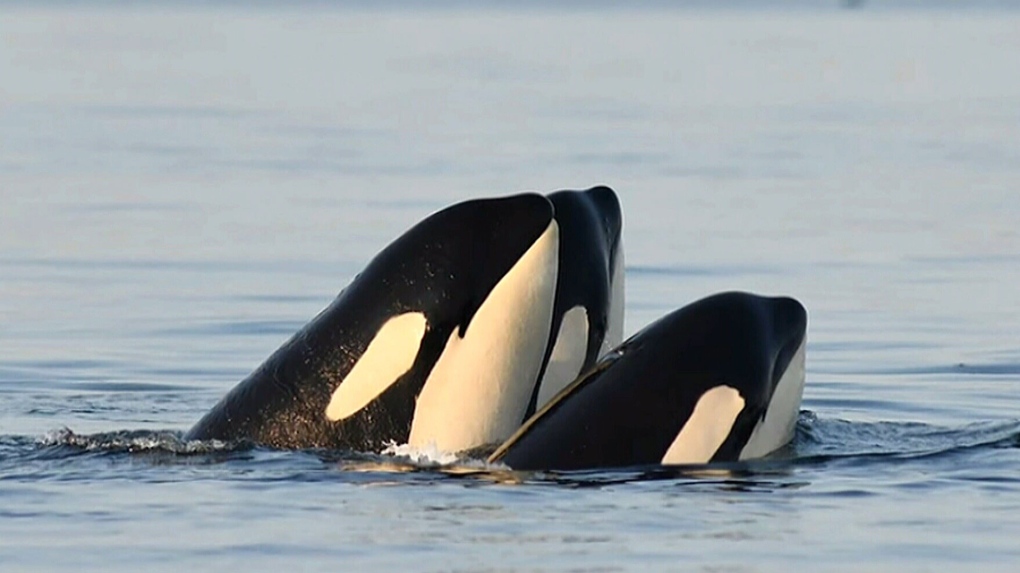Orcas ramming boats doing some 'teenage roughhousing': UBC researchers

Gangs of killer whales have been causing chaos off the coast of Spain for the past few years, ramming into hundreds of boats, causing expensive damage to some and even sinking three since 2020.
What’s causing orcas to target vessels – bumping into them and tearing their rudders off – remains a mystery, researchers at the UBC Marine Mammal Research Centre have a theory: teenage mischief.
The whales seem to go after sailboats in particular, and specifically their rudders, which led the scientists to think the animals are motivated by curiosity above all. In addition, most of the orcas interacting with boats in the area are juveniles.
“Killer whales are very curious and they love to inspect things and see what’s going on,” Taryn Scarff, a masters student with the research centre told CTV News. “They’re just having some fun, and it’s just some teenager behaviour that’s gotten a little bit out of hand.”
Gotten out of hand, because killer whales are massive and can cause a lot of harm with out meaning to.
“If they were purposefully attacking the boats, they would be a little bit more aggressive in their approach. They seem to be approaching the boats quite calmly,” Scarff said, noting that the whales only appear aggressive because of their size.
“If it was a more planned attack, I would assume they’d be putting more speed into it. But that would also definitely take a toll on their bodies – it would be like us running into a wall over and over,” she continued.
The main theory that emerged when the behaviour among the killer whale population off the Spanish coast began was that one individual whale—the mother within the pod—had a traumatic event involving a sailboat, and she was seeking revenge on the vessels, Scarff explained.
She also began teaching younger whales to do the same.
“They saw mum doing this behaviour and thought it looked really fun and cool so they started doing it,” said Scarff.
The boat-bashing behaviour is now catching on with the young whales in another group, and seafarers' encounters with them are increasing.
That’s because, similar to human teenagers, killer whales have fads. And boat-bumping may just be the hot new thing with the kids in that area.
Another example of an orca fad is when a female in the Pacific Northwest’s Puget Sound wore a dead salmon on her nose, and the trend spread to all three pods in her area. That trend sparked in the 1980s, and died quickly after it appeared.
Like human fads, researchers don’t know how long this one will last.
Scientists are trying to figure out why exactly the whales are ramming boats, and what particularly interests them about said boats, before anyone gets seriously hurt.
A research group specific to the phenomenon has been set up in Spain, and they created an app to track killer whale sightings in hopes there won’t be any more sinkings.
Sea crews can check the app while travelling, and use it like a traffic light. Greens mean no killer whale sightings in the area, yellow means some and red means there have been many, so find a different route.
Scarff notes that current theories about why orcas are targeting boats are purely speculation from researchers at this point, and after three years of research into this phenomenon, there’s more work to do.
“At the end of the day, who really knows other than the killer whales?” she said.
CTVNews.ca Top Stories

Donald Trump says he urged Wayne Gretzky to run for prime minister in Christmas visit
U.S. president-elect Donald Trump says he told Canadian hockey legend Wayne Gretzky he should run for prime minister during a Christmas visit but adds that the athlete declined interest in politics.
Ho! Ho! HOLY that's cold! Montreal boogie boarder in Santa suit hits St. Lawrence waters
Montreal body surfer Carlos Hebert-Plante boogie boards all year round, and donned a Santa Claus suit to hit the water on Christmas Day in -14 degree Celsius weather.
Historical mysteries solved by science in 2024
This year, scientists were able to pull back the curtain on mysteries surrounding figures across history, both known and unknown, to reveal more about their unique stories.
Montreal man dead after boat explodes in Fort Lauderdale
A Montreal man is dead and several others are injured after a boat exploded in Fort Lauderdale, Florida.
Mother-daughter duo pursuing university dreams at the same time
For one University of Windsor student, what is typically a chance to gain independence from her parents has become a chance to spend more time with her biggest cheerleader — her mom.
Azerbaijani airliner crashes in Kazakhstan, killing 38 with 29 survivors, officials say
An Azerbaijani airliner with 67 people onboard crashed Wednesday near the Kazakhstani city of Aktau, killing 38 people and leaving 29 survivors, a Kazakh official said.
King Charles III focuses Christmas message on healthcare workers in year marked by royal illnesses
King Charles III used his annual Christmas message Wednesday to hail the selflessness of those who have cared for him and the Princess of Wales this year, after both were diagnosed with cancer.
Alberta premier hopes for health reform payoff in 2025, regrets deferring tax cut
"It may have been better for Albertans if we'd implemented and then found a way to be able to pay for it."
NFL's Netflix debut on Christmas Day kicked off without a glitch
Mariah Carey opened Wednesday’s doubleheader with a taped performance of “All I Want for Christmas is You” before Patrick Mahomes, Travis Kelce and the two-time defending Super Bowl champion Kansas City Chiefs faced off against Russell Wilson, T.J. Watt and the Pittsburgh Steelers.
































